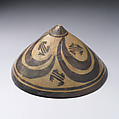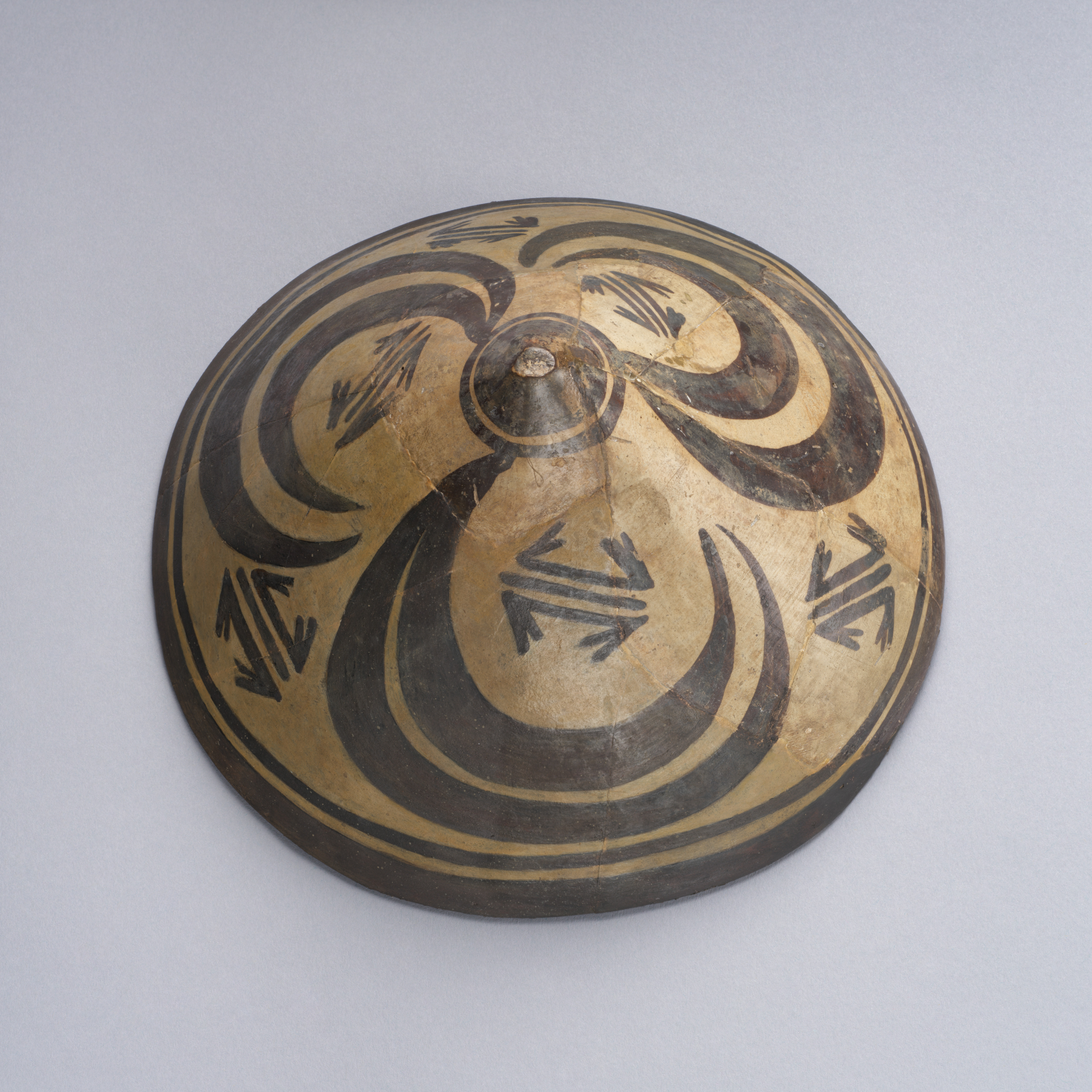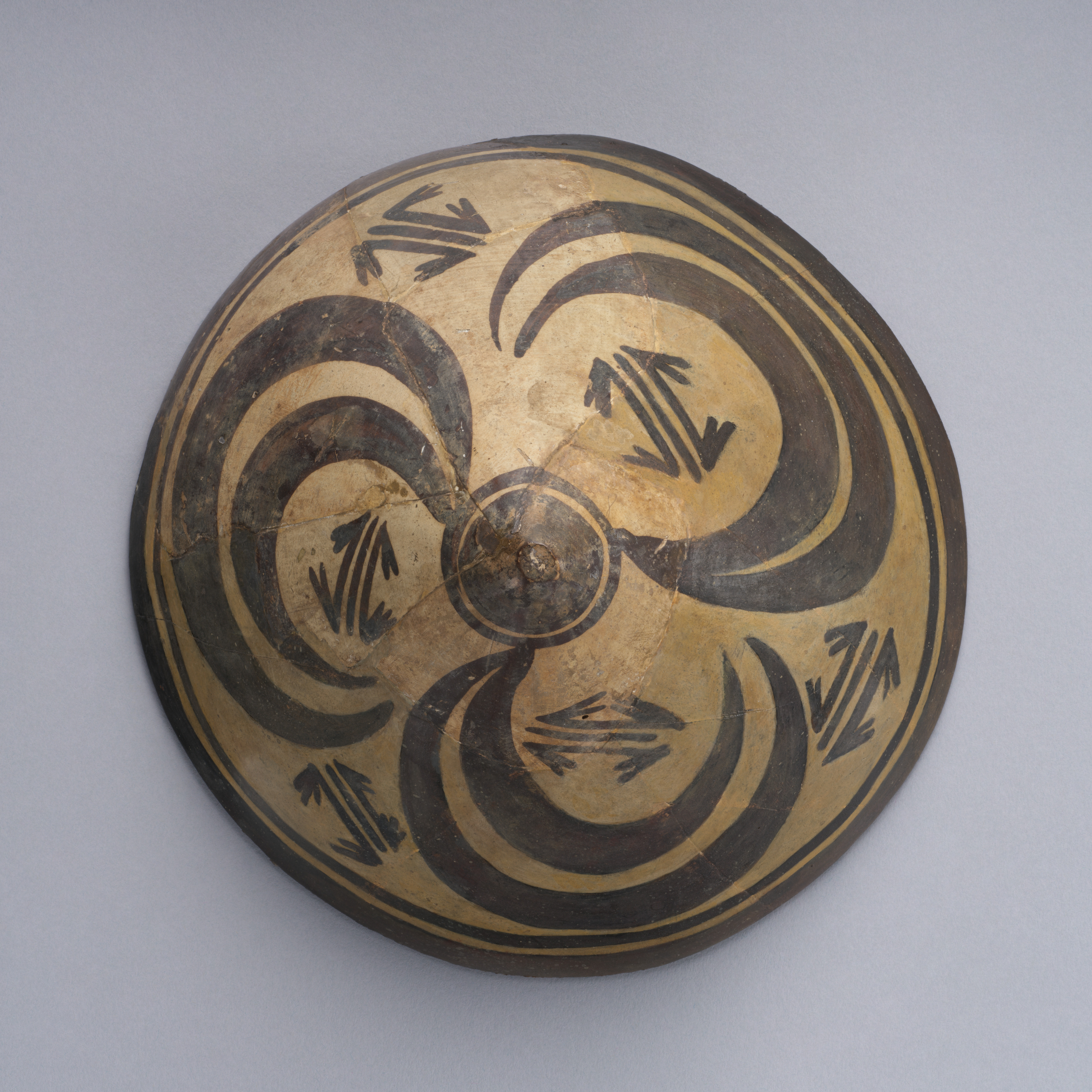Bowl with radial design of ibex horns
Not on view
This conical bowl has straight sides and a pointed bottom; it cannot stand up on its own. It is made of a pale buff clay with painted brown decoration on the outside, especially large double swells radiating from the base with geometric designs within and around them. The regular form of the cup suggests it was finished on a slow wheel. About one quarter of it survives; the rest is modern reconstruction.
This bowl was excavated in 1932 at Tall-i Bakun A in southwestern Iran, a prehistoric site near Persepolis. During the fifth millennium B.C. Bakun was a hub for trade between pastoral nomads who raised sheep and goats in the highlands and the farmers who raised barley, wheat and peas in the Marvdasht Plain. As a result it grew into a major administrative center, as attested by the many stamp seals found there. It was also where much of the pottery used by the pastoralists was made, including this bowl. The shape of this bowl means it could not have been set down, so it was likely either placed on a stand or driven directly into the ground. Indeed, the later possibility is most likely if this vessel was used by pastoralists who lived in camps for much of the year. Given its size the bowl was most likely a drinking cup, though it is unclear what was drunk from it.
The double swells that dominate the design of this cup likely evoke the distinctive horns of the ibex. The ibex is a specifically Iranian motif, as they are native to the Zagros Mountains of western Iran, but did not live, for example, on the plains of Mesopotamia. Thus they are a marker of the unique, mountain identity of the pastoralists living in Fars during the Chalcolithic age. Indeed, this vessel is one of the earliest images of an ibex from Iran, and thus stands at the beginning of a long tradition of depicting this iconic animal.
Due to rights restrictions, this image cannot be enlarged, viewed at full screen, or downloaded.
This artwork is meant to be viewed from right to left. Scroll left to view more.




